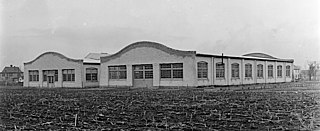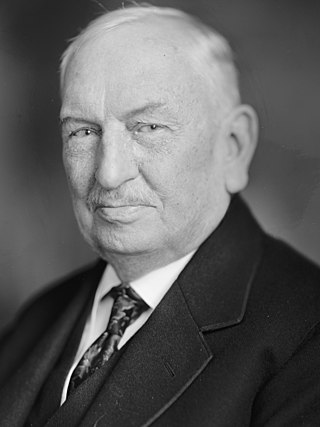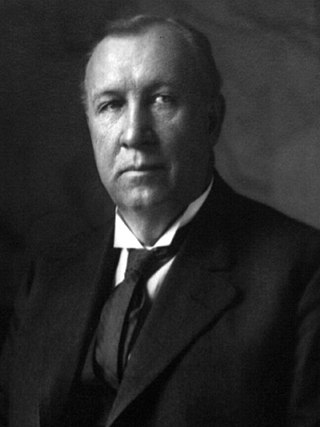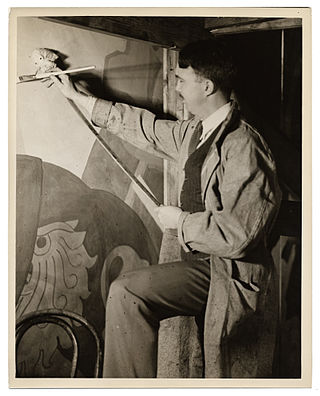← 1899 1903 → | |||
| |||
The 1901 Cleveland mayoral election saw the election of Tom L. Johnson by a very large margin. [1] Johnson ran on a pro-municipal ownership and tax reform platform. [1] [2] [3]
| |||
| Elections in Ohio |
|---|
 |
The 1901 Cleveland mayoral election saw the election of Tom L. Johnson by a very large margin. [1] Johnson ran on a pro-municipal ownership and tax reform platform. [1] [2] [3]

Presidential elections were held in the United States on November 6, 1888. Republican nominee Benjamin Harrison, a former U.S. senator from Indiana, defeated incumbent Democratic President Grover Cleveland of New York. It was the third of five U.S. presidential elections in which the winner did not win the national popular vote, which would not occur again until the 2000 US presidential election. Cleveland was the last incumbent Democratic president to lose reelection until Jimmy Carter in 1980.

The Wright Company was the commercial aviation business venture of the Wright brothers, established by them on November 22, 1909, in conjunction with several prominent industrialists from New York and Detroit with the intention of capitalizing on their invention of the practical airplane. The company maintained its headquarters office in New York City and built its factory in Dayton, Ohio.
Thomas Johnson, Tom Johnson or Tommy Johnson may refer to:

Newton Diehl Baker Jr. was an American lawyer, Georgist, politician, and government official. He served as the 37th mayor of Cleveland, Ohio from 1912 to 1915. As U.S. Secretary of War from 1916 to 1921, Baker presided over the United States Army during World War I.

Theodore Elijah Burton was an American attorney and Republican politician from Ohio. He served in the United States House of Representatives, the U.S. Senate, and the Cleveland City Council.

Tom Loftin Johnson was an American industrialist, Georgist politician, and important figure of the Progressive Era and a pioneer in urban political and social reform. He was a U.S. Representative from 1891 to 1895 and Mayor of Cleveland for four terms from 1901 to 1909. Johnson was one of the most well known, vocal, and dedicated admirers of Henry George's views on political economy and anti-monopoly reform. A panel of 69 scholars in 1993 ranked him second among the ten best mayors in American history.

Charles Emil Ruthenberg was an American Marxist politician who was the founder and first head of the American Communist Party (CPUSA). He is one of four Americans to be buried in the Kremlin Wall Necropolis.

Michael Hoke Smith was an American attorney, politician, and newspaper owner who served as United States secretary of the interior (1893–1896), 58th governor of Georgia, and a United States senator (1911–1920) from Georgia. He was a leader of the progressive movement in the South and in the successful campaign to disenfranchise African American voters in 1907.

The city of Cleveland, Ohio, was founded by General Moses Cleaveland of the Connecticut Land Company on July 22, 1796. Its central location on the southern shore of Lake Erie and the mouth of the Cuyahoga River allowed it to become a major center for Great Lakes trade in northern Ohio in the early 19th century. An important Northern city during the American Civil War, Cleveland grew into a major industrial metropolis and a gateway for European and Middle Eastern immigrants, as well as African American migrants, seeking jobs and opportunity.

Herman C. Baehr was an American politician of the Republican Party who served as the 36th mayor of Cleveland, Ohio, from 1910 to 1911.

John Harrington Farley, also known as "Honest John" Farley, was an American politician of the Democratic Party who served as the 27th and 34th mayor of Cleveland, Ohio, from 1883 to 1884 and from 1899 to 1900.

James Robert "Loafer" McAleer was an American center fielder, manager, and stockholder in Major League Baseball who assisted in establishing the American League. He spent most of his 13-season playing career with the Cleveland Spiders, and went on to manage the Cleveland Blues, St. Louis Browns, and Washington Senators. Shortly before his retirement, he became a major shareholder in the Boston Red Sox. His career ended abruptly. During his brief tenure as co-owner of the Red Sox, McAleer quarreled with longtime friend and colleague Ban Johnson, president of the American League. In the wake of this disagreement, he sold off his shares in the Red Sox and broke off his relationship with Major League Baseball.

This article is a timeline of the history of the city of Cleveland, Ohio, USA.

Major Tom Loftin Johnson was an American painter and an art teacher at West Point. He created public murals – the largest of which was 70 feet (21 m) long. His American Pietà painting, which won $1,000 in the 1941 Carnegie International contest, was intended to highlight the race problem in the United States. A Pietà is meant to show the Virgin Mary holding the crucified Jesus. In Johnson's American Pietà, the black mother holds her lynched son whilst others hide his tortured body.

Henry Viley Johnson was an American lawyer and politician who served as the Mayor of Denver from 1899 to 1901.

Albert Loftin Johnson was an American business executive in the streetcar industry. A baseball enthusiast, he was a key figure in the short-lived Players' League of 1890, while owning the Cleveland franchise in that league. He also briefly owned the Cincinnati Reds of the National League.

Charles Willard "Billy" Stage was an American attorney, politician, professional baseball umpire and amateur track athlete. A native of Painesville, Ohio, Stage attended Western Reserve University, where he tied an amateur world record in the 100-yard dash. After briefly becoming a National League baseball umpire in 1894, he finished law school and became a private practice attorney. Stage served in the Ohio House of Representatives in 1902–03 before returning to law practice.

The Cleveland Traction Wars was a political conflict in Cleveland, Ohio, which surrounded the question of whether or not municipal ownership would be applied to the city's streetcar system. It was a key issue during the mayoralty of Tom L. Johnson from 1901 to 1909. This was one of many issues on which Mayor Johnson, a Democrat and a proponent of municipal ownership, and Senator Mark Hanna, a Republican, came into conflict.

The following is a bibliography of Cleveland, Ohio. It includes selected publications specifically about the city, Cuyahoga County, and the Greater Cleveland Metropolitan Area.